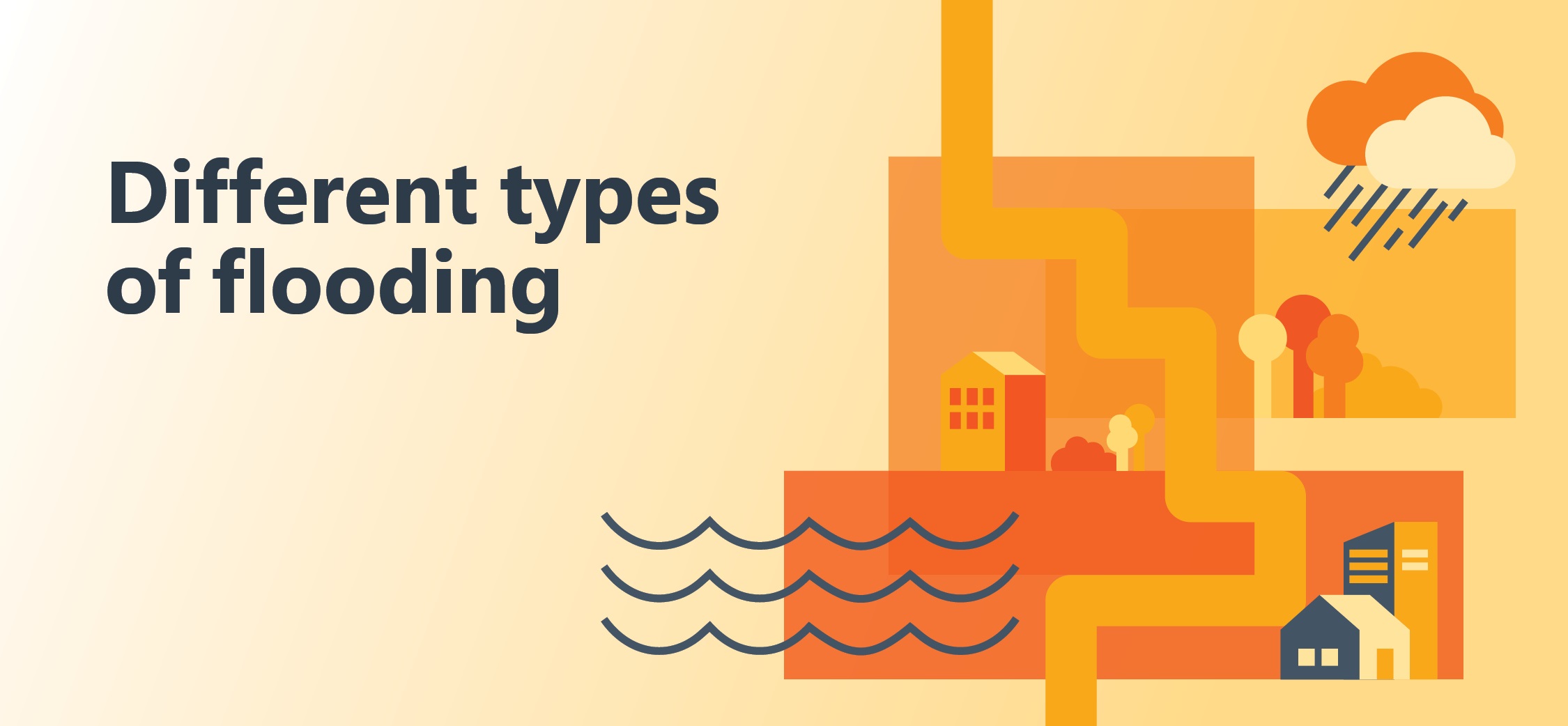Types of Flooding

Flooding is simply defined as when a normally dry area is covered in water. Every flood is different. Flooding can occur and vary depending on the quantity, duration, and location of rain falling on catchments.
There are three main types of flooding:
- riverine flooding
- flash flooding
- storm surge and storm tide
Understanding the different types of flooding can help you prepare for how quickly flooding is likely to occur, the duration of heightened flood water levels, where flooding is likely to occur and also, the potential impacts on your home, workplace, or the road network.
If you would like to find out more information about flooding, visit the Queensland Government and Get Ready Queensland.
Riverine flooding
Riverine flooding happens when significant rain falls over river catchments for several days or weeks. As river systems reach capacity, creeks and rivers can rise or burst their banks to cause flooding. Riverine flooding can occur days after the rain event has finished. In this type of flooding, water heights can rise slowly and be slow-moving.
Related weather events include tropical cyclones, lows, and monsoon troughs. The Mary and Burnett River systems, and their tributaries, are the primary cause of riverine flooding across the Gympie region. The Queensland Reconstruction Authority has a great video on riverine flooding below.
Flash flooding
Flash flooding occurs when there is significant rainfall in a short timeframe. Flash flooding can happen anywhere, at any time, and without warning. Flash flooding is dangerous. Expect powerful water moving fast. In built-up areas, drains, creeks and rivers can fill quickly and excess water can spread across streets, roads, parks and into buildings. Related weather events include severe storms. The Queensland Reconstruction Authority has a great video on flash flooding below.
Storm surge and storm tide
Storm surges and storm tides occur when sea levels rise higher than normal tides. These powerful ocean movements occur when strong winds push water up against the coast, most often during cyclones. Storm tides are when storm surges coincide with high tides. They can swamp low-lying areas, sometimes for kilometres inland.
Strong coastal winds can worsen impacts by causing large waves. Related weather events include severe storms, tropical cyclones and low-pressure systems. Coastal districts are more prone to coastal hazards including inundation from low-lying coastal land, erosion of the shoreline (landslides), and tidal inundation.